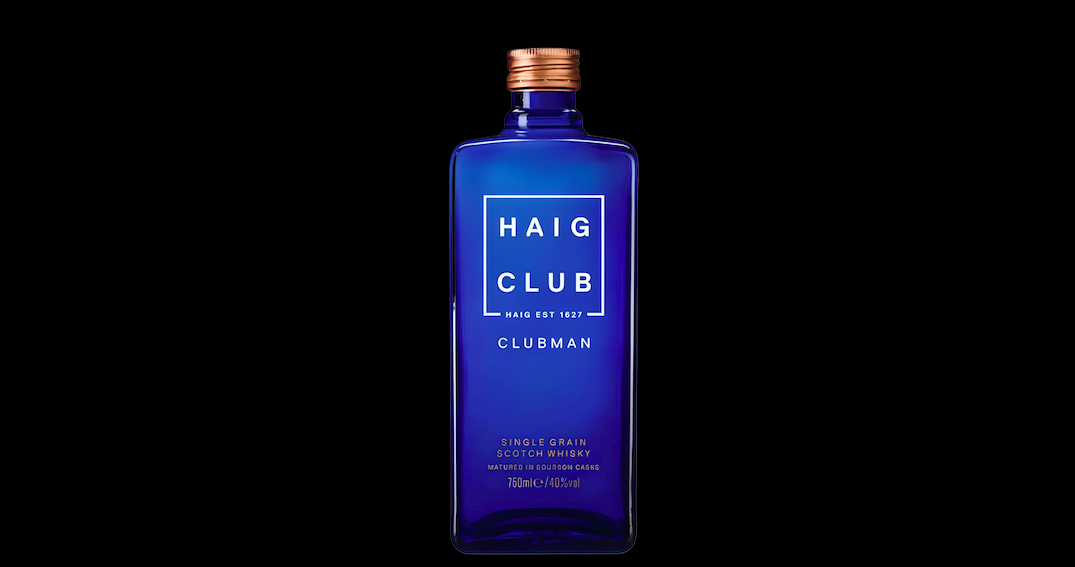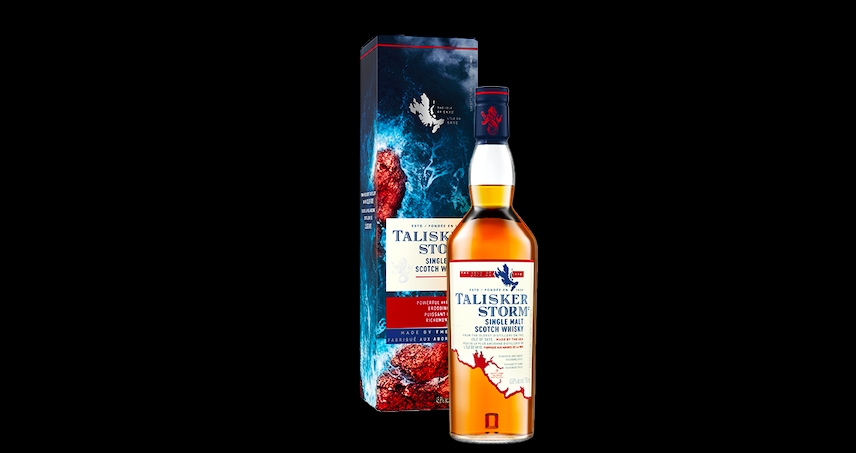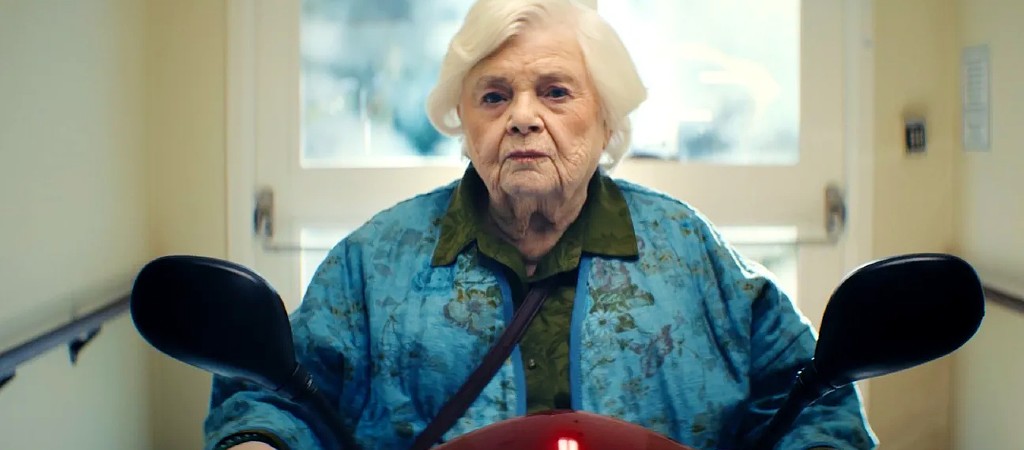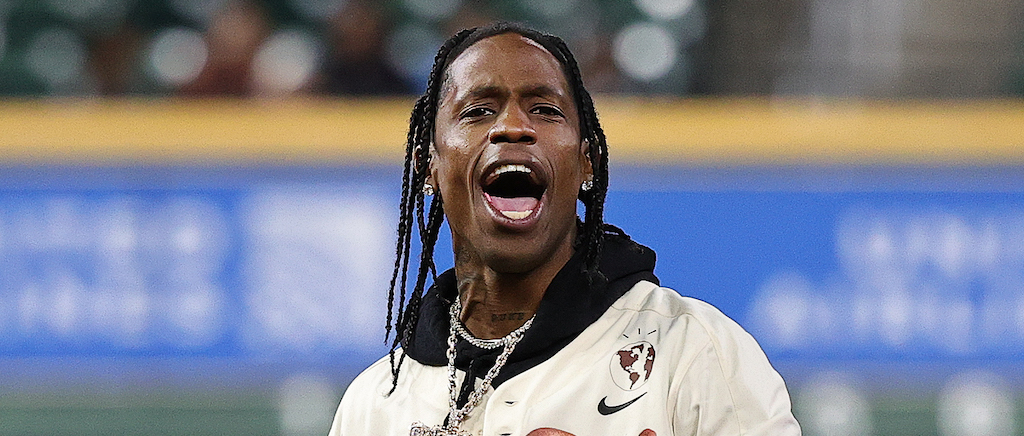
Getting into Scotch whisky is fun. Don’t forget that. It’s not supposed to be a drag. It’s a recreation.
That said, it can also be overwhelming. Have you been to a liquor store lately? The Scotch whisky aisle is massive (if you have a good liquor store in your town). And let me tell you, it’s all not created equal. You can just as easily grab a shitty bottle and be done with the style as you can grab an amazing bottle and start a journey that carries you through the rest of your life.
That’s where people like me come in. I’ve spent a lifetime refining my palate and spirit skills. I judge these things for a living at the world’s biggest spirits competitions. I go to all the trade shows. I live this stuff. Last year alone, I tried close to 2,500 whiskeys across all categories. Through all of that, I’ve also had the good luck in life to have been to Scotland many times and have learned from some of the biggest and most iconic names in the Scotch whisky game.
Long story short, I can guide you — as a beginner — to the good stuff. But also, I can guide you to the right stuff. See, getting into a spirit is multi-faceted. You have to trust yourself and — perhaps most importantly — want to do the work to build a palate that is well-tuned to savor Scotch whisky. To be crystal clear, no one likes their first sip of whiskey. If someone says they did, they’re lying. Whisky — like all things in this life of ours — is an acquired taste we build, mold, and refine over a lifetime. And that means that you have to start somewhere. Let’s take that first step!
- The 50 Best Scotch Whiskies Of 2023 (So Far), Ranked
- The Best Scotch Whiskies Of 2023, Ranked
- Every Bottle Of Johnnie Walker Scotch Whisky, Power Ranked For 2023
- Great Single Malt Scotch Whiskies Under $100, Blind Tasted And Ranked
- The Smoothest Single Malt Whiskeys On The Market, Blind Tasted And Ranked
Step 1 — Getting Started

The first thing you have to do is open your mind. No one’s palate is static. We start building our palates in the womb. Our parents then feed and nourish us, which further builds our palates. Then, as young adults, we all choose to continue building that palate independently or close ranks and stop expanding beyond the foods we “like” or “grew up with.”
You also need to understand the palate fed to you by a parental figure in your youth is nothing more than a lottery of geography. Had you been born in India instead of Indiana or even Berlin instead of Beijing, you’d have a completely different palate and set of desires for foods, drinks, tastes, and textures. What does that mean, exactly? It means that you can learn to like literally anything … if you open your mind. Yes, some DNA markers make things like cilantro taste like soap to some people. But I can tell from working in a sensory industry, you can find people who love the taste of soap out there, too!
To wrap this up, if you’re not willing to open your mind to new experiences and flavors, then the rest of this is pointless. At the end of the day, learning, drinking, and enjoying Scotch whisky — or any whiskey for that matter — is about a flavor profile that transports you to places in your memory. The profile of a whisky is a story being written by the whiskey maker in chemicals that touch our tongue, turn into electrical impulses, travel to our brain, and then become keys looking for doors to unlock into our past experiences. When each key finds its door in your brain, it unlocks a sense memory of your grandma’s vanilla sugar cookies or that time you had a picnic with your lover in a sunflower field or the time you went skiing and sipped on the best hot chocolate of your life.
That’s exciting — that’s what makes it fun!
Step 2 — Understanding the Styles

When you get started with Scotch whisky, you can kind of ignore the regional designations (Islands, Campbeltown, Lowland, Highland, Speyside, Islay). While each region does have a semi-throughline, there are a gazillion examples of every type of whisky from each region. Islay is known for peated whisky, for instance. There are also distilleries there making unpeated whisky. Highlands are known for unpeated whiskey. There are also distilleries there making peated whisky. We can talk about regions another time.
The biggest difference to know in styles is “Peated” versus “Unpeated.” This is the biggest flavor difference by far and trumps both region and style when talking about the flavor profile of a Scotch whisky.
Peated Whisky is a whisky made with “peated malt”. Peated malt is barley that’s malted with peat (flammable, carbon-rich, oil-rich soil dug from a peat bog). In the malting process, barley is wet, and just as it starts to sprout for germination, heat is applied to halt the process and dry (malt) the grain. In the case of “peated malt,” peat is used as the heat source, which produces a lot of smoke. That smoke imbues itself into the barley grain as it dries. These are called phenols (but you don’t have to worry about that now). Depending on how smoky the peat is will impart how “peated” the malt is. This can vary massively from a hint of earthy campfire smoke in the distance to feeling like you’re licking the inside of an asphalt mixer on a hot day or stuffing medical bandages into your mouth.
And yes, some people seek those flavor notes out. Their palates even crave it.
“Unpeated” malt is made with a neutral heat source. Steam is the main one. That heat source doesn’t impart any smoke/phenols into the malted barley as it dries. That means that the sugars that eventually make their way into the distiller’s beer are not smoky. That’s… pretty much all you need to know to start.
Next, you’ll need to know the basic styles of Scotch whisky that you’ll see on the shelf. They are as follows:
- Single Grain Scotch Whisky — A whisky from a “single” distillery that’s made with “grain” (wheat, barley, rye, and corn mostly). Can be peated or unpeated.
- Single Malt Scotch Whisky — A whiskey from a “single” distillery that’s made with 100% malted barley or “malt”. Can be peated or unpeated.
- Blended Scotch Whisky — A blend of single malt and single grain whiskies from different distilleries in Scotland. Can be peated or unpeated or a mix.
- Blended Malt Scotch Whisky — A blend of single malt whiskies from different distilleries in Scotland. Can be peated or unpeated or a mix.
- Blended Grain Scotch Whisky — A blend of single grain whiskies from different distilleries in Scotland. Can be peated or unpeated or a mix.
Once you get these styles down, you’ll be ready to hit the liquor store.
Step 3 — Choosing The Right Bottles

This is probably where you might get the worst advice of your whisky-drinking life. It usually goes something like, “Start cheap and work your way up to the expensive stuff.” That’s a dangerous ask in the world of Scotch whisky. There’s a ton of super shitty bottom-shelf scotch that costs $15 to $40 per bottle. Beware of bottles with stags or glens on the label that just say “Scotch Whisky” and cost $20. They’re almost always garbage.
Here’s my professional advice. Start mid-range with the best stuff that’s approachable. Of course, as a beginner, you won’t know what that is, really. That’s where I come in. But I can tell you, you’re going to need to spend anywhere from $40 to $120 to find good palate-expanding scotch. Do you want your first steak to be a slice of chuck that should have been ground into burgers or a nice grass-fed ribeye? And to take the steak metaphor to its end, you also don’t need to start with A5 Wagyu either.
A nice middle ground of great flavor and structure is where you want to start. It’ll give you a foundation of what’s great about Scotch whisky without throwing you in the deep end. At the same time, you’ll get really good whisky that if you don’t love immediately, you might grow to love.
Here’s where to start with each style of Scotch whisky:
Beginner Blended Scotch Whisky — Chivas Regal Blended Scotch Whisky Aged 12 Years

ABV: 40%
Average Price: $33
The Whisky:
The Strathisla Distillery in the Scottish Highlands is where Chivas comes together. The whisky is well-rounded and built from malt and grain whiskies that harken back to centuries of whisky blending in Scotland.
The Taste:
Nose: The nose opens with a deep sense of dried apples and pears dipped in fresh honey and then rolled in roasted almonds and walnuts with a whisper of barrel spice sneaking in late.
Palate: The palate hints at dried florals before touching a buttery toffee, soft spiced tobacco leaf, and almost musty oak.
Finish: The end is a little chewy thanks to that spiced tobacco leaf with a nice hint of apple/pear cider cut with winter spices and honeycomb.
Why It’s Perfect For Beginners:
This is the quintessential “on the rocks” whisky. The nose, palate, and finish are so soft and welcoming with almost universally understood flavor notes (honey, apple, and florals). The taste goes deeper so take time to find those notes — you’ll likely never be overwhelmed.
Beginner Blended Malt Scotch Whisky — Johnnie Walker Green Label Blended Malt Scotch Whisky Aged 15 Years

ABV: 43%
Average Price: $79
The Whisky:
Johnnie Walker’s Green Label is a solidly crafted whisky that highlights Diageo’s fine stable of distilleries across Scotland. The whisky is a pure malt or blended malt, meaning that only single malt whisky is in the mix (no grain whisky). In this case, the primary whiskies are a minimum of 15 years old, from Talisker, Caol Ila, Cragganmore, and Linkwood.
Tasting Notes:
Nose: Soft notes of cedar dance with hints of black pepper, vanilla pods, and bright fruit — think red berries, fresh pear, and nectarines — with a wisp of singed green grass in the background.
Palate: The palate delivers on that soft cedar woodiness while edging towards a spice-laden tropical fruit brightness with grilled peaches covered in salted caramel, honey malt biscuits, and bitter yet sweet marmalade with a dash of winter spiciness.
Finish: The finish is dialed in with hints of soft cedar bark, singed wild sage, bark-forward winter spice, and stewed stonefruit leading toward a briny billow of smoke at the very end.
Why It’s Perfect For Beginners:
This is a great Scotch whisky, full stop. It’s also a stellar example of how amazing single malts can come together to create something greater than their individual parts. This is a subtle yet bold pour that builds palates and eventually gets people hooked on Scotch whisky.
Beginner Blended Grain Scotch Whisky — Compass Box Hedonism Blended Grain Scotch Whisky

ABV: 43%
Average Price: $129
The Whisky:
Compass Box is one of the best blenderies operating today. The London-based shingle created its Hedonism expression as a bit of an outlier. The juice is 100 percent grain whisky from North British Distillery and Cameronbridge Distillery, with a focus on first-fill bourbon barrels and re-charred American oak. Those barrels are married into this masterful blend. It’s then proofed down to a very accessible 86-proof and bottled.
Tasting Notes:
Nose: There’s a clear sense of bourbon vanilla and caramel that draws you in (especially if you’re a bourbon drinker).
Palate: The taste holds onto those notes while adding in soft orchard fruits and a buttery, rich toffee silkiness and sweetness.
Finish: The end smooths out the vanilla into a pudding, with a mild spiciness next to a final note of salted caramels covered in toasted coconut surfacing on the slow finish.
Why It’s Perfect For Beginners:
Blended grain whiskies are a little rarer these days. That means that fewer of them actually reach these shores and the ones that do tend to be limited editions. That means that the price tags are often steeper. That all said, this is a fantastic example of how multiple grains in Scotch whisky can bring a wider spectrum of flavor notes to the finished product.
This is also an excellent learning whisky as you’ll be rewarded with more and more depth the more time you take with it, adding water, and going back in for more as it blooms in the glass.
Beginner Single Grain Scotch Whisky — Haig Club “Clubman” Single Grain Scotch Whisky

ABV: 40%
Average Price: $36
The Whisky:
Scotch isn’t only single malts. David Beckham’s signature whisky with Diageo is a single grain whisky made with a mix of mainly wheat with a touch of malted barley. This grain whisky hails from Cameronbridge Distillery. The whisky aged over seven years before vatting, proofing, and bottling.
Tasting Notes:
Nose: This has a very fruity nose with stewed apples mingling with banana bread, orange, and lemon with a touch of oak spice.
Palate: The palate adds an eggnog spice vibe to the mix with a nice vanilla depth and a touch of cedar before the citrus and stewed fruits take back over.
Finish: The spiciness peaks with a bit more banana bread and walnut at the end.
Why It’s Perfect For Beginners:
Single grain whiskies aren’t as popular as single malts, which also means that not as many make it over here. This one is an exception thanks to being tied to one of the biggest celebrities on the planet. And while this is closer to a budget whisky than most on this list, it does present a clear sense of what single grain whisky is. It’s much closer to a light bourbon than a single malt in many cases.
That makes this a good bridge if you’re looking to move from American whiskey to Scotch whisky.
Beginner Unpeated Single Malt Scotch Whisky — Glenmorangie Quinta Ruban Highland Single Malt Scotch Whisky Aged 14 Years

ABV: 46%
Average Price: $60
The Whisky:
Glenmorangie’s 14-year expression spends 10 years resting in used American oak casks. Those barrels are vatted and the whisky is re-barreled into Quinta Ruban port wine casks from Portugal for another four years of mellowing before batching, proofing, and bottling as-is.
Tasting Notes:
Nose: The nose draws you in with a sense of burnt orange layered into dark chocolate and then melted over a singed marshmallow with a hint of malted vanilla cookie tying it all together.
Palate: That dark chocolate drives the palate with a hint of waxiness and woody winter spice next to whole black peppercorns, fresh tangerine, and a whisper of mint chocolate chip ice cream.
Finish: The dark chocolate, woody spice, bright orange, and sharp spearmint all collide on the finish with a sense of soft malted sweetness and faint old oak staves.
Why It’s Perfect For Beginners:
Quick Note: I decided to break single malt into two categories since peated and unpeated single malt are so distinct.
This is an amazing whisky. It’s familiar to a Western palate in so many ways while eliciting sense memories of holidays, summers roasting marshmallows, and pure sweetness.
This is also a great bridge whisky between bourbon and single malt. There’s a lot of connective tissue while still feeling purely like a Scotch whisky. It’s also freaking delicious.
Beginner Peated Single Malt Scotch Whisky — Talisker Storm Single Malt Scotch Whisky

ABV: 45.8%
Average Price: $73
The Whisky:
This no-age-statement whisky has an interesting aging process. The whisky is aged in a combination of used barrels and re-charred barrels. They take old barrels, strip the charring, rebuild them, and then re-char them to Talisker’s standards. The process adds a new layer of depth by rejuvenating the staves. The whisky from those barrels is then blended into a darker, smokier, and deeper single malt.
Tasting Notes:
Nose: This sip amps up the peat a tad while bringing in the brine next to a clear caramel maltiness, honey-stewed pears, and a touch of charred beach driftwood.
Palate: The smoke at play here is more akin to a seaside campfire, while the brininess is reminiscent of oyster liquor with a dry chili spice lurking in the background that’s just kissed with salted plum preserves.
Finish: There’s a hint of the bright berry leftover from the Talisker 10 with a touch more peppery spice by the end that leans towards a salted toffee that’s laced with faint campfire smoke and charred oyster shells.
Why It’s Perfect For Beginners:
Throwing a beginner into the deep end with peated single malt is a lot to ask. A medicinal Laphroaig or ashy hot Ardbeg might turn the uninitiated off whisky forever. Talisker is neither of those things. This is subtle and fruity with a touch of campfire smoke that takes you back in time. This is more like chasing a bowl of smoked salmon chowder with a smoked plum cake next to a campfire on a drizzly beach. It’s always soft and soothing, making this a great place to start a peated whisky journey.
Step 4 — Keep A Journal

Okay, you’ve got some basic information, some whisky, and hopefully tired it. Now, write down what you’ve sampled.
This is sort of a crucial step for a beginner or a pro. I write down every whisky I taste with tasting notes (there’s no way to remember thousands of whiskies a year without a journal).
Writing down what you feel and taste will give you a chance to refer back and build forward. You don’t have to be overly wordy either. Just take a sip, close your eyes, and feel the tastes that come forward. Simply writing down “apple” or “vanilla” or “honey” or “campfire” is enough in the beginning. Then take another sip and see if you can refine those notes toward something succinct like “apple fritters” or “vanilla cookies” or “campfire on a beach” and so forth.
The key is starting somewhere. Having a journal to reference back to will be critical in building your palate and enjoying whisky along your journey — wherever it may take you.















 (@ThatRetro)
(@ThatRetro) 

 (@cill_dara)
(@cill_dara)